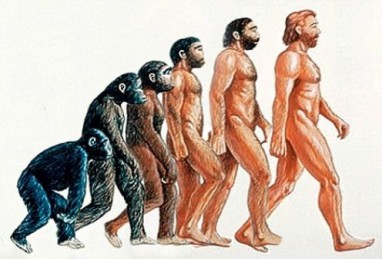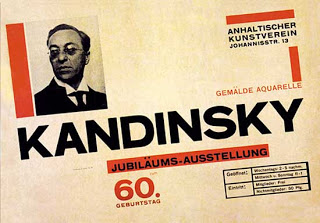The Structuralist & Post-Structuralist
Author
25/09/13
- Many meanings.
- Text is an anchor; it gives us direction as to how an image is read.
- Flexibility of meaning.
- Gives me as an audience, interaction.
Shephard Fairey - Obama.
Parodies came out.
Change the word, change the meaning.
The Structuralist & Post-Structualist Author
Theory:
Sets of ideas
Articulated opinions and positions
why do we look at them? offer other ways of seeing and thinking.
THEORIES ARE JUST SETS OF IDEAS.
an able us to think in a deeper/broader way
key part in any practice of communication design
STRUCTURALISM
Philosophy movement - Europe - late 1800's - 1960s. This is the way in which we can explore the world.
Focuses on society as a system. We look at it and think how does it work. What are the organizational systems that exist to enable that to happen?
Differential relations are the key to understanding culture and society. They look at things in relation to each other. Juxtapositions.
Focus on material practices as points for analysis. What does society make?
The Structualists:
Ferdinand de Saussure 1857-1713
Linguistics / The structure of language / Semiotics
This is his study of language as a system of signs.
The cat sat on the mat
syntagmatic axis
paragmatic axis
structure within sentences. but it can break
'the sign its self' = cat. (signifier)
he breaks the sign up into 2 part. the signifier and the signified. there's a mark and there's a meaning.
Claude Levi - Strauss - 1908-2009
Anthropology - study of people
he looked at Kinship structures (family relationships)
how were they structured within society
(structural anthropology)
how marriage exists within society…
Vladimir Propp 1895-1970
31 functions in Russian folk tales story telling: narrative forms. genres. patterns
all stories fit into the 21 categories/genres because they had patterns
Broke up fairy tales into sections.
What’s the point?
Structualist theorists looked at culture. society, language, etc and asked how do these function?
Through investigation they isolate, then document the structure of the object of study and present this as knowledge. WE NOW KNOW THIS.
Now we know how these structures work, we can understand them.
It is at the same time as modernism. Rise at the same time as science. it is the rise of the time that everything started to be catalogued. everything began to be measured against each other and known. the structures of society rose with industrialization. knowledge became something we could all have.
Graphic Design - Modernism
Can we see the same ideas being explored in graphic design practice?
IF GRAPHICS HAS A STRUCTURE WHERE IS DOES DESIGN FIT?
What examples can we find of this kind of rational. structural approach to communication?
Where does the designer position themselves in the structure
Josef Muller - Brockmann 1914-1996
obsessed with the grid
he looked at the world and designed places. where is the structure? I need to go beneath the surface and find how its made.
'The designer's work should have the clearly intelligible, objective, functional, and aesthetic quality of mathematical thinking.'
'Working with the grid system means submitting to laws of universal validity'
SOMETHING THAT WILL ALWAYS BE TRUE ANYWHERE IN THE WORLD
Find out how it functions and how it works and then replicate that.
Otto Neurath and Gerd Arntz - Language
(Isotype - International system of typographic picture education)
WORDS DIVIDE, IMAGES UNITE. O.N - 1973'they have to be so simple that they may be put in lines like letters' O.N 1936
A universal system of communication
simplified forms were his solution
Herbert Bayer 1900-1985
KANDINSKY
Had to be universal. Unobtrusive.
‘The mental eye focuses through the type and not upon it.’ Beatrice Warde ‘The Crystal Goblet’ 1930.
This typographic mark is just there as a gateway to the signifier.
It needs to be clear and evident and accessible.
What of the author in all of this?
Lets start to think of the designer as an ‘author’
Even bringing this term into the room things start to get complicated.
What is an author to us?
Is the designer an originator? A facilitator? A conduit?
Starting to question the complexity of design.
Post-Structuralism
Relies on original ideas
Move from uncovering and investigating the system to looking at how the audience and users of the systems utilize, impact on and interact with these systems.
The system doesn’t work unless people use it. It only exists because people engage with it.
So it is not just the system that is important it is how the users of the system exist and position themselves within the system that is explored.
How do people work within these systems and this structures? How do they change them and manipulate them.
Roland Barthes
Semiotics
Signs are complex cultural chains of meaning.
Visual and linguistic signs combine to direct meaning.
Myth – ‘indisputable image’ R.Bathes ‘mythologies’ 1957 (an image which cannot be challenged)
‘the birth of the reader must be at the cost of the death of the author’ R.Barthes ‘image, music, text’ 1977
Subtle but readable markers of power
He wants to see how people within that culture are responding
Are they believing everything that is there?
Are they being interpreted the way they are being asked to interpret it?
He prioritizes the audience
We don’t look at where the meaning comes from; we look at where it ends up.
It turns the whole dynamic of power on its head.
Michel Foucault 1926-1984
Prisons – Madness – Objects – Power
How meanings shift and change over time
‘What is an Author?” 1969 A critique of the power of the authorial role
looks how society deals with their sick and ill
definition of madness changing over time
The power to define
Who has the power to say what is what at a period of time
People in culture constantly changing
‘These aspect of an individual, which we designate as an author (the way we define an author) are projections, in terms always more or less psychological, of our way of handling texts: in the comparisons we make, the traits we extract as pertinent, the continuities we assign, or the exclusions we practice’
Jacques Derrida 1930-2004
He wrote about typography
Things do not exist in isolation
You can only have dark if you have light …
We see these things not in isolation but next to each other
How we put things together and build an understanding
Speech can be changed
Katherine McCoy 1945
‘See Read’ 1989
Post structuralism is all about pushing back
WHY DOES IT WORK LIKE THAT?
Ellen Lupton & J. Abbott Miller
Both designers, educated
Form and content
Design that asks questions that looks on itself and reflects on itself.
The Bauhaus used elementary forms.
They play around with symbols, organizational structure.
‘The graphic designer could be seen as a language-worker equipped to actively initiate projects – either by literally authoring texts or by elaborating, directing or disrupting their meaning’ 1992 E.Lupton
the designer becomes more evident / more visible
Tomato
MMM… Skyscraper, I love you.
Karl Hyde & John Warwicker. 1994
It’s all about interpretation of their experience, then the audiences interpretation.
‘We are all on a journey; all work is about experience and the mapping of that experience, and for us Tomato is where we go to compare these maps. In effect we bring a map (or maps) from one territory and overlaying one upon the other to see what happens’
the designer as an author starts to become a form.
Grand Fury 1988
Anonymous collection of authors.
‘When a government turns its back on its people, is it civil war?’ 1988
ACT UP’s communication wing
Who has power to be visible and invisible?
Their aim is to make the invisible, visible. Giving people a voice.
Michael Rock ‘ The Designer as Author’ 1996
Designer and writer
Power can shift from a government to people


